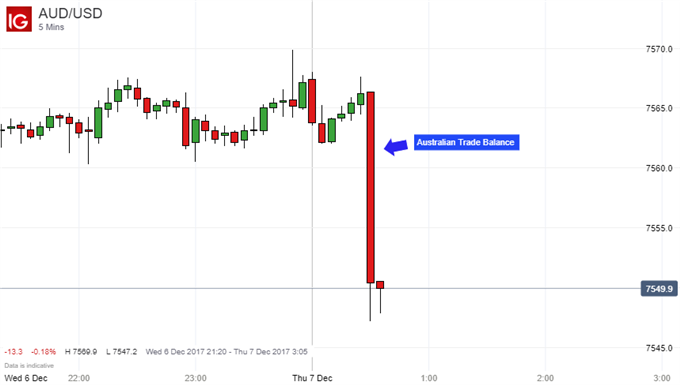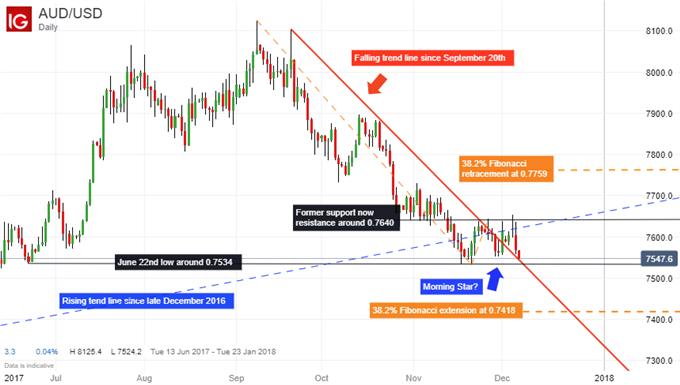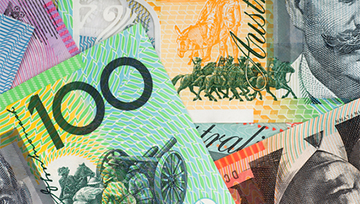Talking Points:
- Australia’s trade balance surplus fell to its lowest level since April 2017 as it missed expectations
- The Australian Dollar was quick to become the worst performing major during morning Asia trade
- While exports declined and imports rose, local bond yields hardly moved as the RBA seems patient
What will drive longer-term FX market trends? See our forecasts here.
After a rather uninspiring current account report a couple of days ago, the Australian Dollar quickly took notice of a more surprising trade balance outcome. Net exports amounted to A$105m versus A$1400m expected, or about 7.5% of what was estimated. The reaction was swift, the Aussie became the worst performing major during Thursday’s morning Asia session.
The shortcoming in the trade balance surplus was accompanied by exports falling 3 percent as imports rose by 2 percent. Because the calculation of the trade balance involves taking the difference between exports and imports, this probably explains the miss. Moreover, net exports is a component of calculating a country’s GDP. A smaller surplus might translate into a weaker GDP outcome which is what we saw yesterday.
Even so, if you look at Australian front-end government bond yields, they hardly budged as the trade data crossed the wires. This might make sense considering that the Reserve Bank of Australia seems to be in no rush to raise rates. The markets think that this will happen once by the end of next year.

On a daily chart, AUD/USD continues to be stuck since bottoming out about two weeks ago. The pair has broken above a falling trend line since September 20th via the formation of another morning star. However, Aussie Dollar has since bounced back down after failing to break above a long-term rising trend line from December 2016. Keep in mind, a morning star pattern doesn’t necessarily indicate that a reversal is imminent. Follow-through seems to be lacking.
If Aussie Dollar chooses to turn lower, the June 22nd low around 0.7534 might prove to be too much again. A break below 0.7534 would expose the 38.2% Fibonacci extension at 0.7418. If AUD/USD tries again to push higher, it faces retesting former support now resistance around 0.7640. A push above that will put the 38.2% Fibonacci retracement at 0.7759 in sight.
Do keep an eye on the intraday IG client sentiment reading for AUD/USD. It now shows that traders are further net-long and that the recent changes gives a stronger bearish contrarian trading bias. This might mean AUD/USD could continue to fall.






